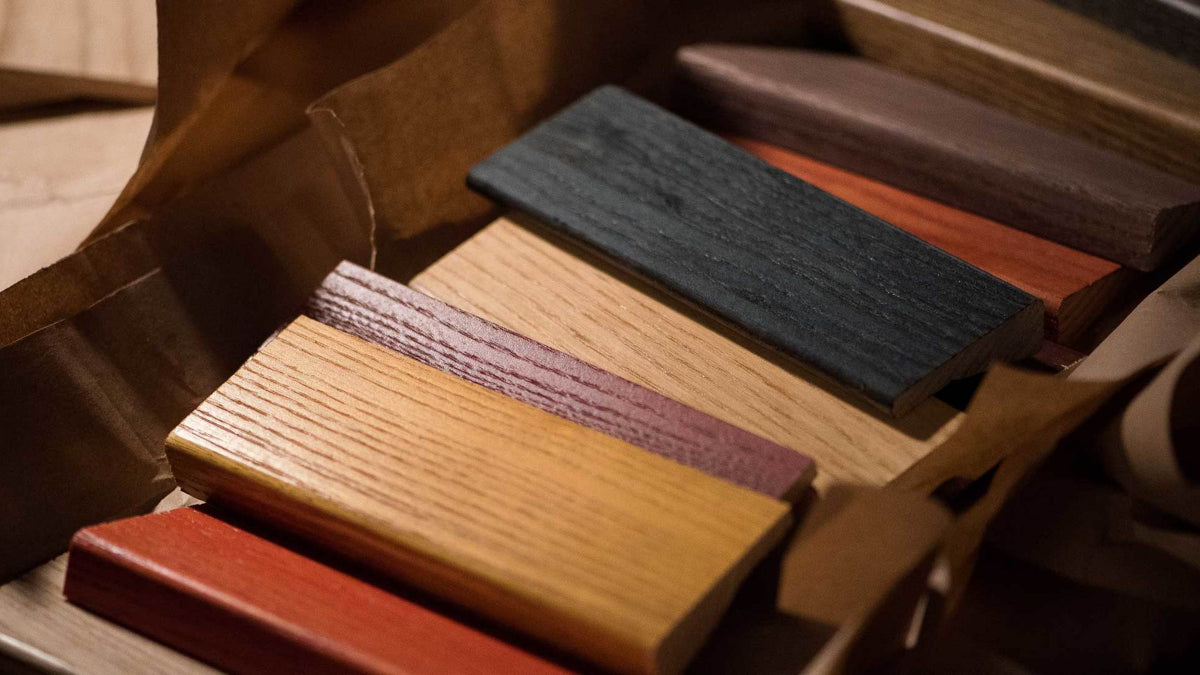What are VOCs in Wood Stain, and Should You Be Concerned?
Whether you’re about to embark on your very first wood stain project, or you’re a frequent DIY stainer, it’s a good idea to educate yourself on the products you plan on bringing into your home. As with paint, paint thinner, finish or any type of solvent, these formulas usually contain ingredients that can pose health and safety concerns. More specifically, there’s a lot of talk these days about VOCs (volatile organic compounds), a mixture present in a lot of wood stain brands. Before you begin your next stain, take time to better understand what exactly VOCs are, the potential risks and how you can avoid them.
First, let’s break down the term “Volatile Organic Compounds.”
A “compound” refers to a combination of elements from the periodic table. Since carbon is always one of the elements present, the term “organic” is added. The fact that the compounds evaporate at lower temperatures (room temp) and break down under normal atmospheric pressure explains the “volatile” part. Unfortunately, these chemical compounds can be highly toxic to people and animals. The Environmental Protection Agency* says VOCs “include a variety of chemicals, some of which may have short- and long-term adverse health effects.” As such, there are strict regulations for product packaging, warning labels and correct use. Stain manufacturers must also follow strict rules for concentration of VOCs in consumer products.
How are VOCs dangerous?
VOCs are emitted into the air as soon as the product cans are opened, when each coat is applied by brush, and again when the stains are drying. The noxious fumes are harmful to the respiratory system, and can mix with other pollutants in the air and contribute to smog. VOCs may even eventually combine with nitrogen oxide and sunlight to form what’s known as ground level or “bad ozone,” which has been shown to cause a variety of health and environmental problems. Oil-based conventional stains that contain higher levels of VOCs are also poisonous to the skin and must be removed from brushes with paint stripper or other chemical agents. You’ve heard how important it is to apply wood stain in well-ventilated areas, right? Or even use a mask when staining? Now you know why.
Why VOCs at all?
Now you’re probably wondering, why are VOCs used at all in wood stains if they’re so toxic? It’s simple — these compounds are what give stains, paints, finishes and thinners the ability to do their job. The addition of VOCs is usually necessary in such products to bind the resins and water to each other to form a cohesive paste, and to allow the product to stick to its intended surface. In most cases, some amount of these compounds is unavoidable. But lately, a few companies have stepped up to create low-VOC options, investing research dollars in developing safer alternatives.
Are there less toxic wood stain options?
All that being said, you have a right to be concerned, whether you’re exposed regularly as a woodworker, or occasionally with home-based renovations. While most standard wood stains on the shelves are oil-based, high-VOC formulas, they’re not your only option.
The good news is, there are low-VOC wood stains that are water-based and engineered to deliver vivid results while significantly lessening the toxicity. PureColor is one of the low-VOC pioneers in the wood stain market. We developed a proprietary Clean Chemistry™ formula that’s created with user safety and the environment in mind and used in all of our stain products. Our water-based wood stains have less than 250 grams per liter of volatile organic compounds,** significantly lower than typical the 550 g/L content of many other commercial stain brands.
Not only do low-VOC wood stains protect your family’s health, they’re actually much easier to clean up after, with only soap and water required. While you should still plan to complete any type of staining in a well-ventilated space (open windows and doors, or outside), you don’t need to worry about wearing a mask while working with these stains and finishes. The stain itself has almost no odor, and there are no fumes or off-gassing after the stains and topcoats have dried.
To ensure you only use stains with lower toxicity, be sure to always read labels, follow usage instructions carefully, and dispose of any leftover product responsibly.
Gearing up for your next DIY stain project? Want to keep harmful chemicals out of your house? PureColor is proud to make safe wood stains and finishes that are better for your family and the environment. Choose your shade on the PureColor website or contact us via email or phone call, to ask about custom colors we have available. And visit these other blogs first for more helpful tips:
- 5 Tips for Picking the Perfect Wood Stain For Your Next DIY Project
- 10 Tips for Safe Wood Staining with Small Children Around
* The Environmental Protection Agency defines VOCs as “any compound of carbon, excluding carbon monoxide, carbon dioxide, carbonic acid, metallic carbides or carbonates, and ammonium carbonate, which participates in atmospheric photochemical reactions, except those designated by EPA as having negligible photochemical reactivity.”

